MORTUARY TEMPLE OF RAMESSES III AT MEDINET HABU
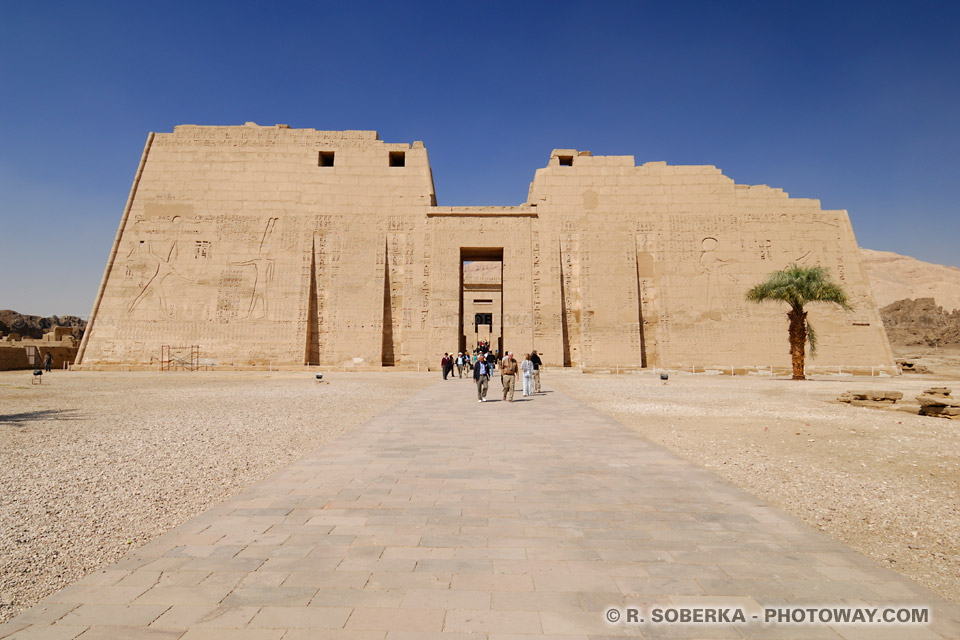
Also on the west bank of Luxor, in the village of Medinet Habu and just a few kilometers from the Valley of the Kings, lies the mortuary temple of Ramses III.
This colossal temple, built about 3,200 years ago during the 20th Dynasty, was dedicated to honoring the deceased pharaoh and the god Amun.
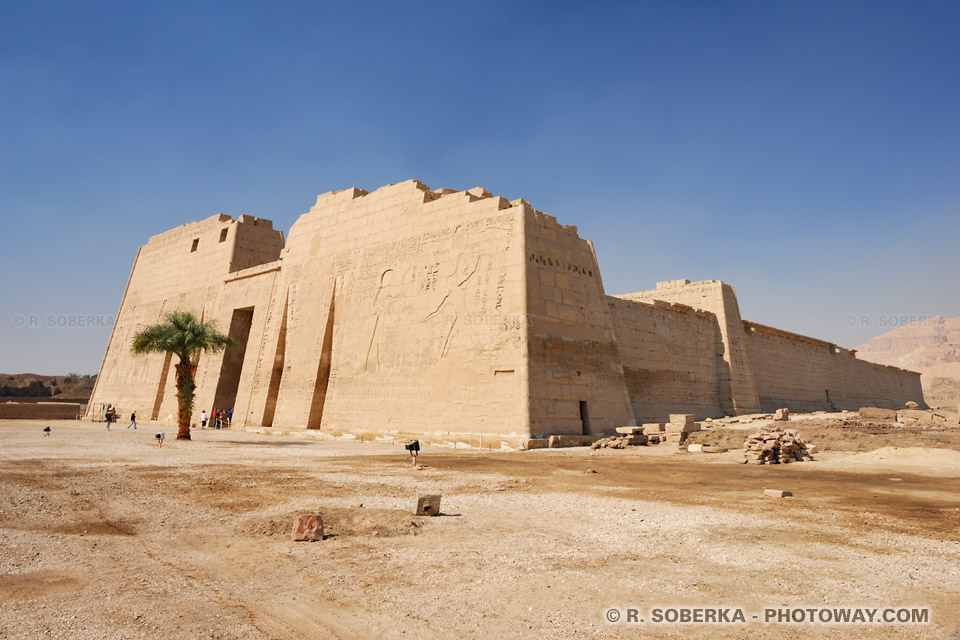
The main temple impresses with its dimensions: it is approximately 492 feet (150 meters) long and 213 feet (65 meters) wide.
It is surrounded by an exceptionally massive enclosure wall.
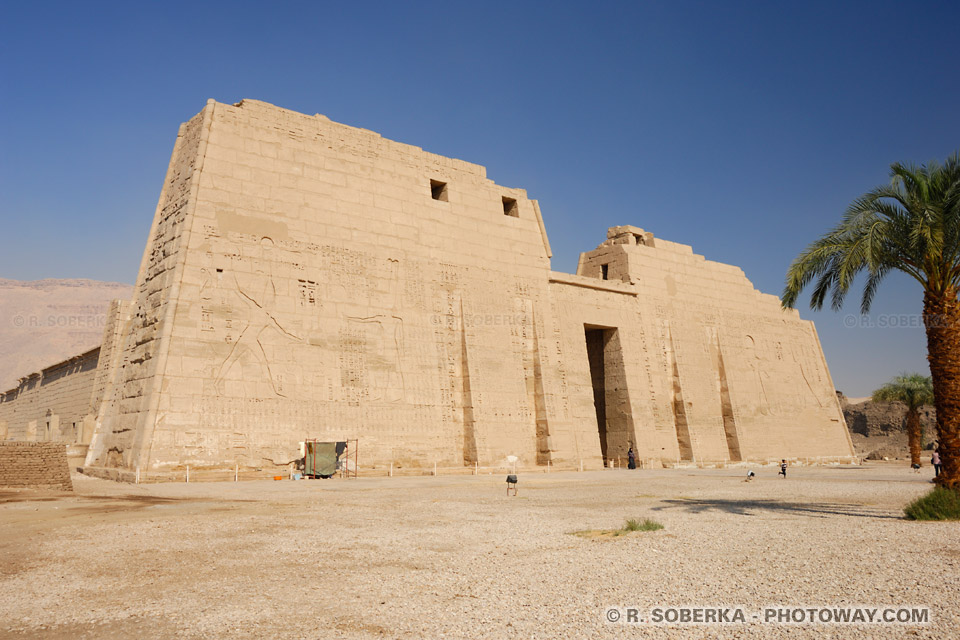
The entrance to the temple is dominated by a massive pylon, rising about 72 feet (22 meters) tall.
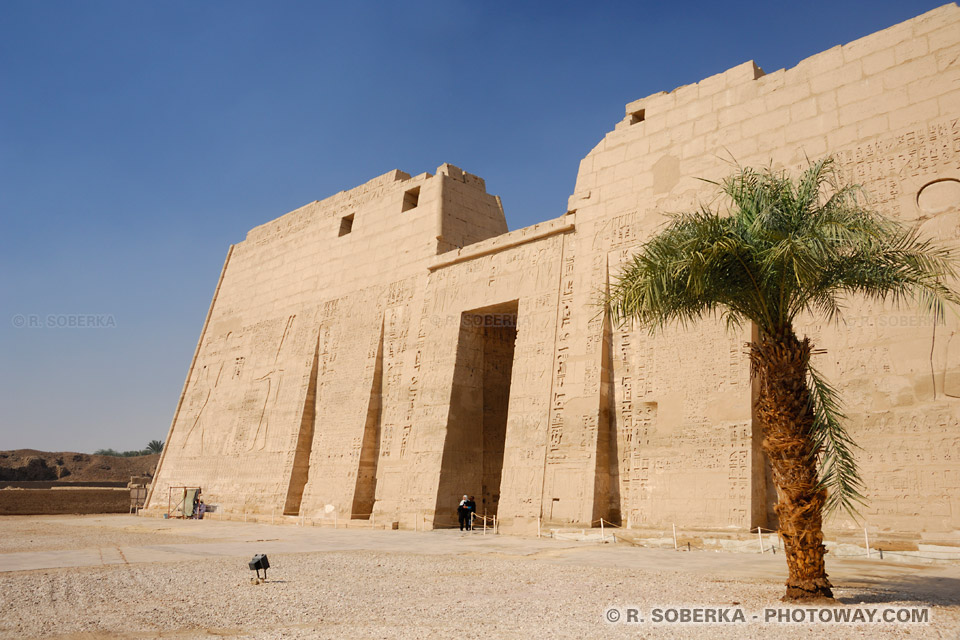
This first pylon is adorned with reliefs depicting the military achievements of the pharaoh, including his victories over the Sea Peoples.
The entrance leads to a series of courtyards, hypostyle halls, and richly decorated sanctuaries.
The site also includes secondary chapels, an adjacent royal palace, and administrative buildings.
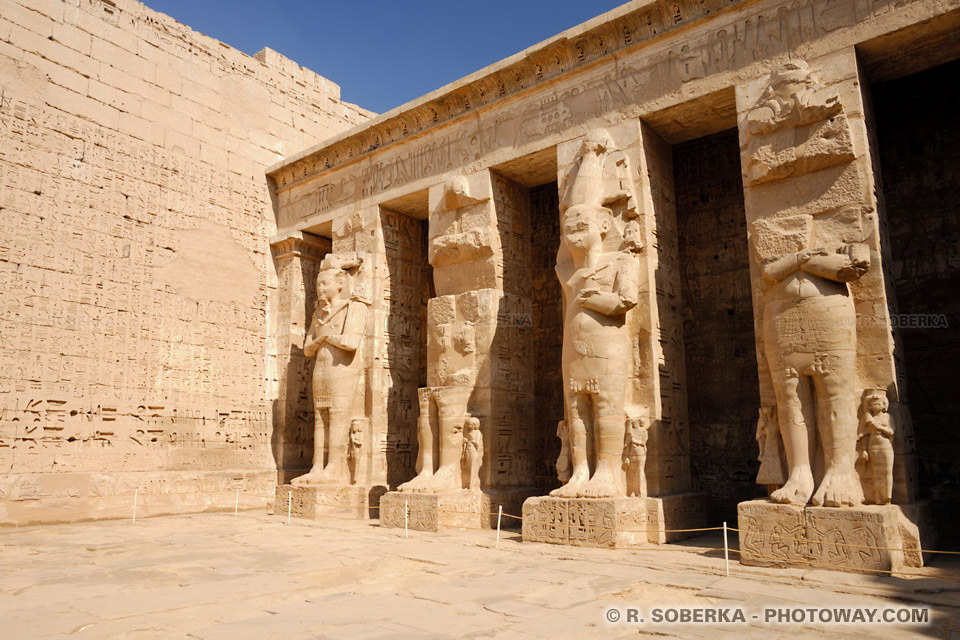
The first courtyard impresses with its immense Osirian statues of the pharaoh, leaning against the columns.
These statues depict Ramses III in a posture of eternal vigilance, adorned with royal regalia, emphasizing his divine authority.
The surrounding walls are finely carved with hieroglyphs and bas-reliefs illustrating rituals and the pharaoh's achievements.
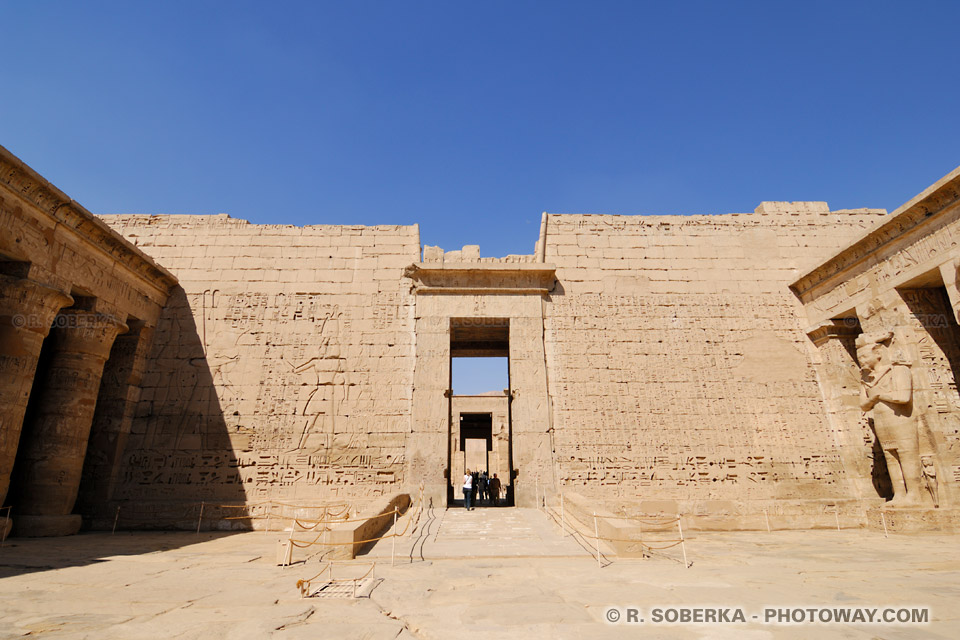
The second pylon of the temple of Ramses III, rising 59 feet (18 meters) tall, marks the transition between the first and second courtyard.
Its surface is adorned with detailed reliefs depicting the pharaoh's military triumphs and religious ceremonies.
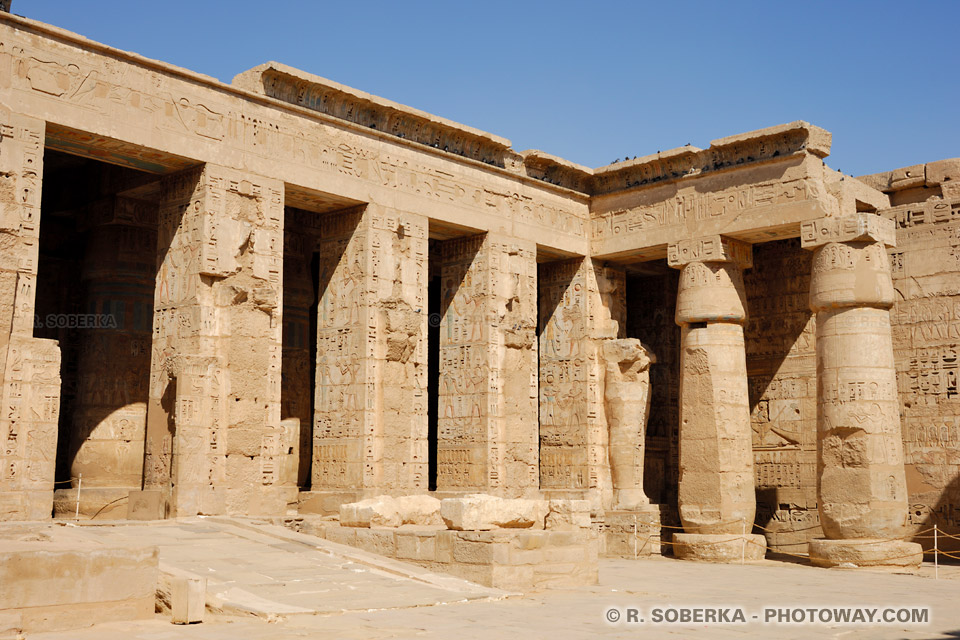
The second courtyard of the temple of Ramses III is a vast open space, surrounded by colonnaded porticos.
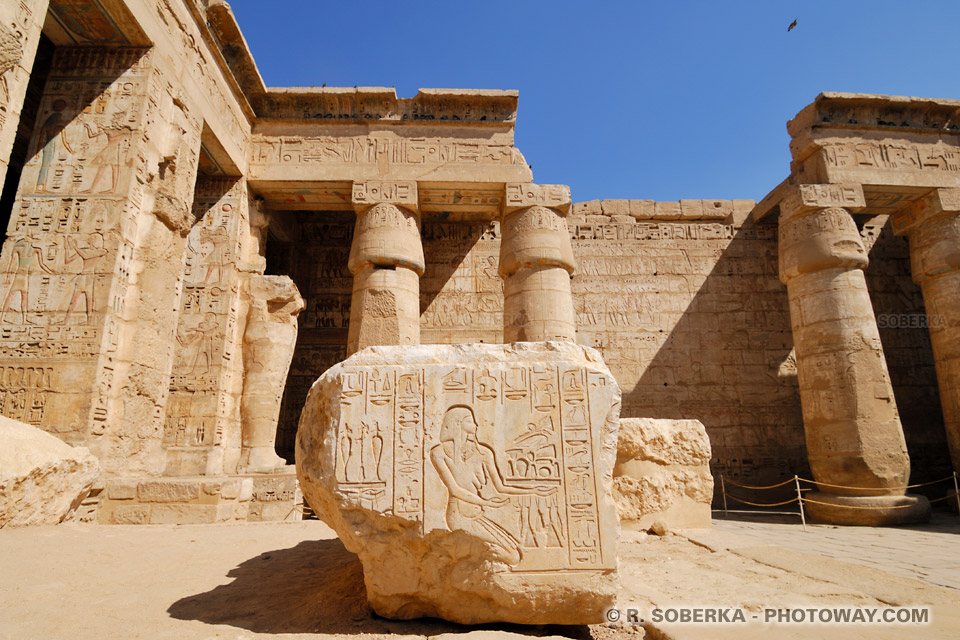
In this second courtyard, a carved stone fragment can be seen depicting Osirian figures and offering scenes.
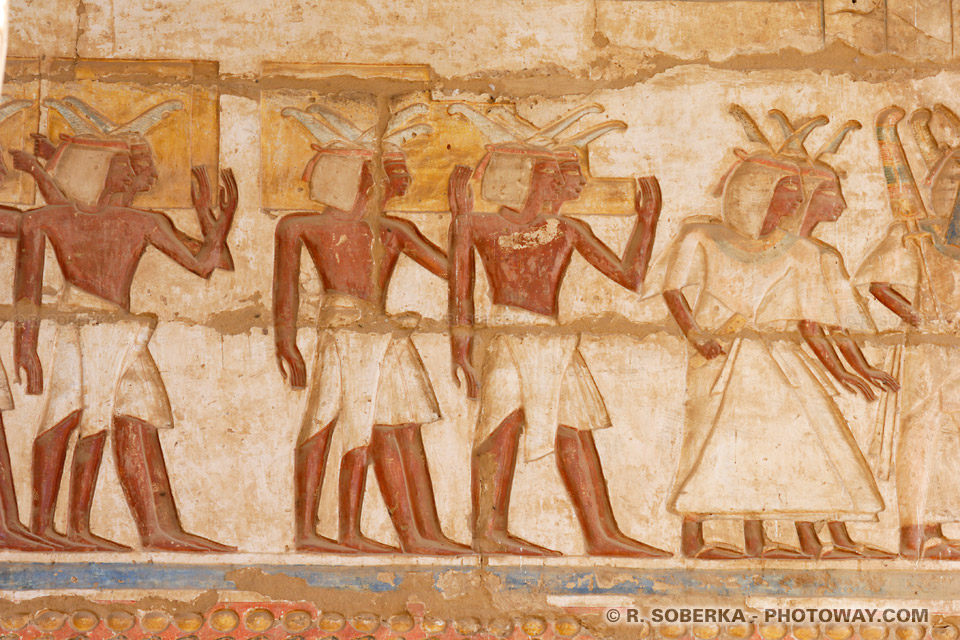
The surrounding walls feature remarkably well-preserved bas-reliefs, with colors still vividly visible, such as this procession scene.
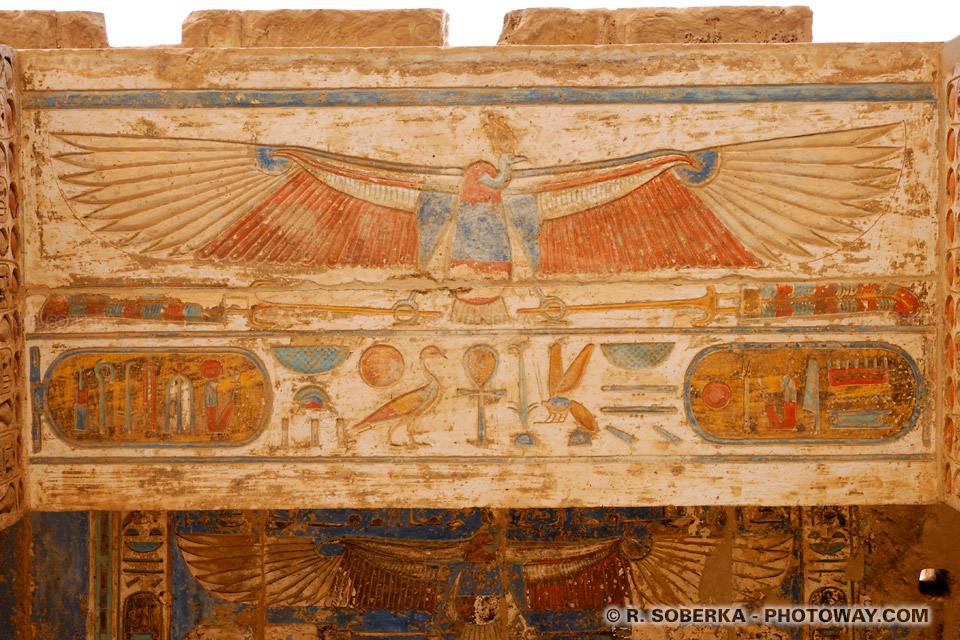
On the ceiling of the passage between the courtyards, more multicolored bas-reliefs can be admired.
This one depicts a falcon, a symbol of divine protection and associated with the god Horus.
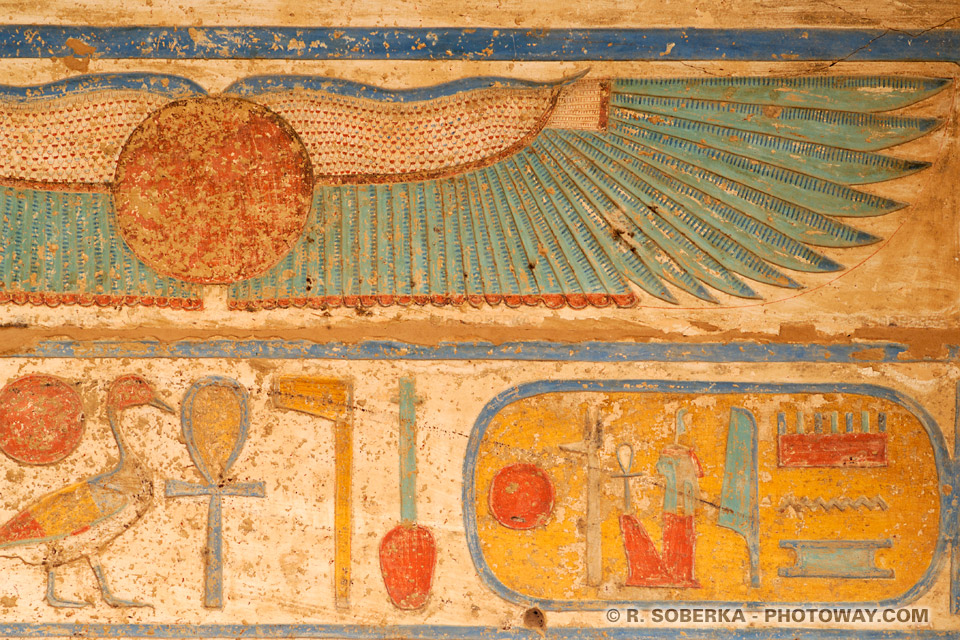
In the next passage, this bas-relief depicts a winged solar disk, a symbol of protection and divine power.
Beneath it, detailed hieroglyphs and cartouches honor Ramses III, surrounded by traditional symbols of life and royalty.
Notice the incredibly well-preserved colors for a painting that is over 3,000 years old!
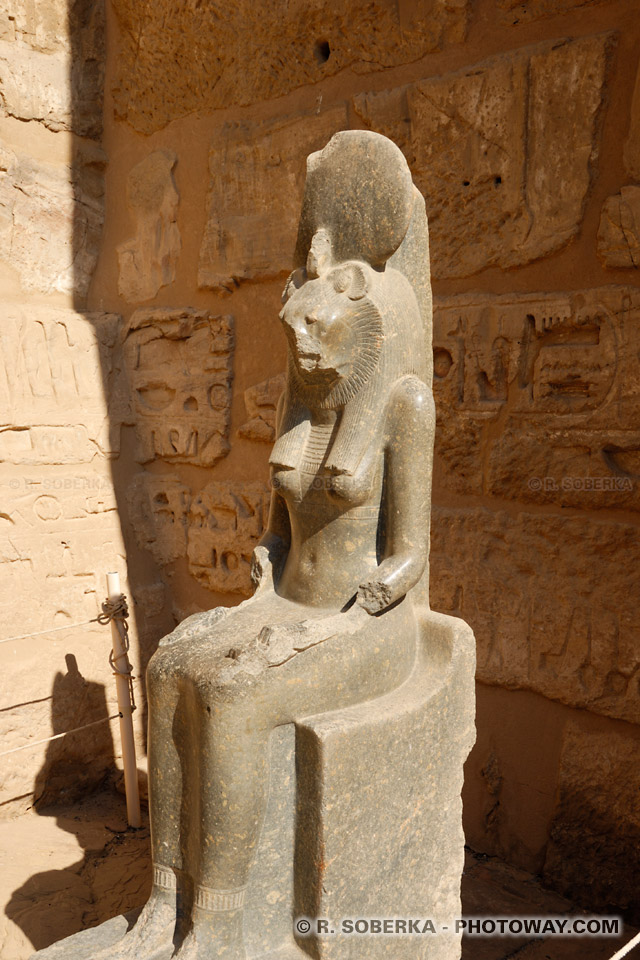
Finally, at the very back of the temple complex of Ramses III, in an area dedicated to divine worship and religious rituals, stands a statue of Sekhmet, the lioness goddess associated with power, war, and protection.
All photos of the Temple of Ramesses III at Medinet Habu © 2010 by Richard Soberka.